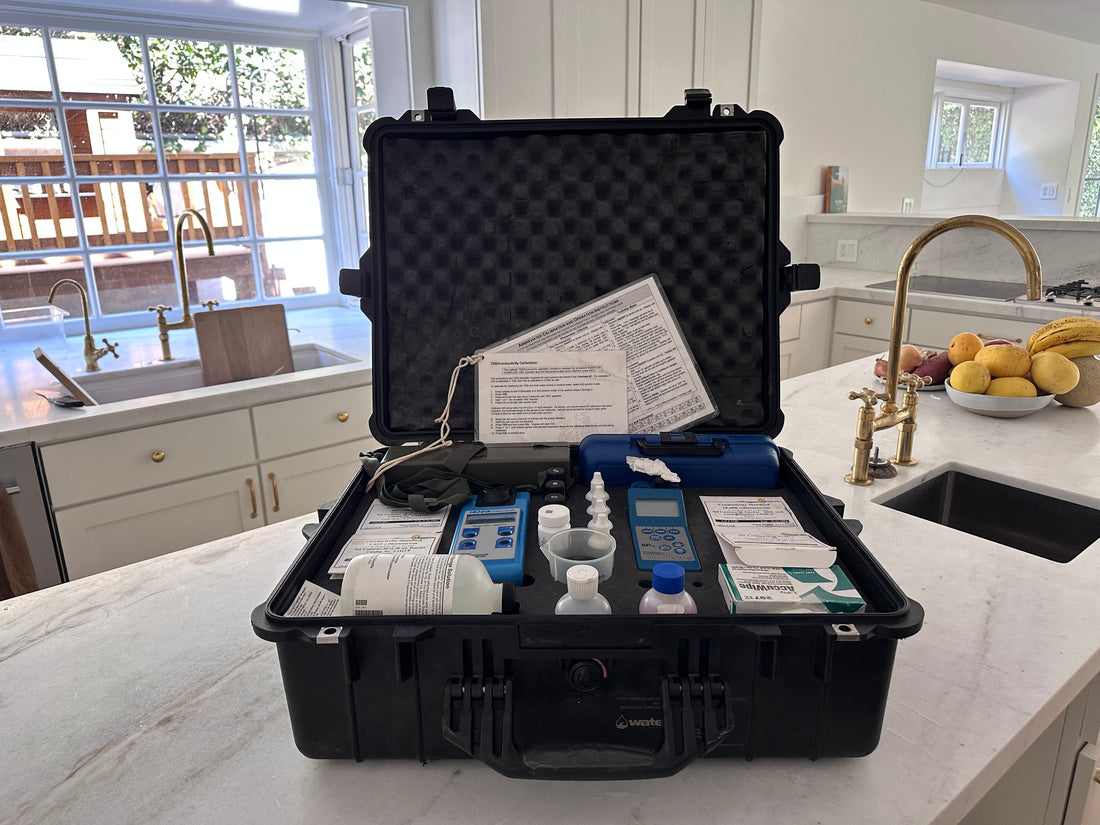
When We Got Serious About Water Quality - Our Water Testing Beast PT1
When we got serious about understanding the quality of our water we went ahead and purchased a IITC‑WQAS/P‑40 Water Quality Analysis Set. This is a military grade, portable, rugged suitcase-style testing station designed for on-site evaluation of raw or treated water. Housed in a watertight, crush-resistant case and weighing around 28 lbs, it’s meant for field use by a single person It includes precise instruments packed securely in foam inserts for travel and protection.

What Does It Test?
The kit performs five main water‑quality measurements:
-
pH – Acidity or alkalinity, using a digital Ultrameter that also measures temperature and ORP.
-
Total Dissolved Solids (TDS)/Conductivity/Resistivity – Indicates mineral content and overall ionic strength of the water.
-
Turbidity – How cloudy the water is, measured in FTU (same as NTU).
-
Free Chlorine – Using a photometer to detect disinfectant level in mg/L.
-
Chemical-warfare agent screening – Using an M272 test kit for visual color‑comparison detection of nerve, mustard, cyanide or lewisite agents (drawn from military use) - ok - this is a bit extreme!
Why These Water Tests Matter
Understanding what’s in your water should be a universal right. These tests help answer a more fundamental question: Is my water clean, safe, and healthy for my family to drink, and cook with?
Here’s what each test reveals about water quality—and why it matters:
1. pH – The Balance Between Corrosive and Bitter
-
What it tells you: Whether your water is acidic (corrosive) or alkaline (mineral-heavy).
-
Why it matters:
-
Acidic water can corrode your plumbing and leach metals like lead or copper into your water.
-
Alkaline water can leave a chalky film on dishes and fixtures, or taste off.
-
-
What’s normal: A safe, neutral pH falls between 6.5 and 8.5.
2. TDS / Conductivity – How Much Is Dissolved in Your Water?
-
What it tells you: The total amount of dissolved minerals, salts, and other solids in your water.
-
Why it matters:
-
High TDS can make water taste metallic, salty, or bitter.
-
It may also indicate unwanted substances like nitrates or heavy metals.
-
-
What’s normal: Under 500 ppm is generally considered safe for drinking.
3. Turbidity – How Clear Is Your Water?
-
What it tells you: Whether your water contains suspended particles like dirt, silt, or biological material.
-
Why it matters:
-
Cloudy water can harbor bacteria or viruses.
-
High turbidity often signals that your water may not be properly disinfected.
-
-
What’s normal: Drinking water should ideally be less than 1 NTU (Nephelometric Turbidity Units).
4. Free Chlorine – Is There Enough Disinfection?
-
What it tells you: How much chlorine is present to kill microbes.
-
Why it matters:
-
Too little chlorine, and your water may not be safe to drink.
-
Too much, and it can irritate eyes, skin, and lungs—and create an unpleasant taste or odor.
-
-
What’s normal: Most public systems aim for 0.2 to 4.0 mg/L.
5. Temperature – Not Just a Comfort Issue
-
What it tells you: The water's temperature during testing.
-
Why it matters:
-
Some bacteria thrive at warmer temps.
-
Higher temperatures can reduce dissolved oxygen levels, affecting taste and freshness.
-
These tests provide a snapshot of your water’s overall health—even if it looks clear coming out of the tap. They help identify:
-
Hidden contamination (like metals or microbes)
-
Imbalances that could harm plumbing or health
-
Whether your water meets basic safety and aesthetic standards
You don’t need to be a chemist. But understanding these measurements can give you the confidence that your water is safe—or the awareness to ask more questions.
If you are in the Los Angeles area, within 20 miles of 90024, we would be happy to inspect your water. Just send us a note.
